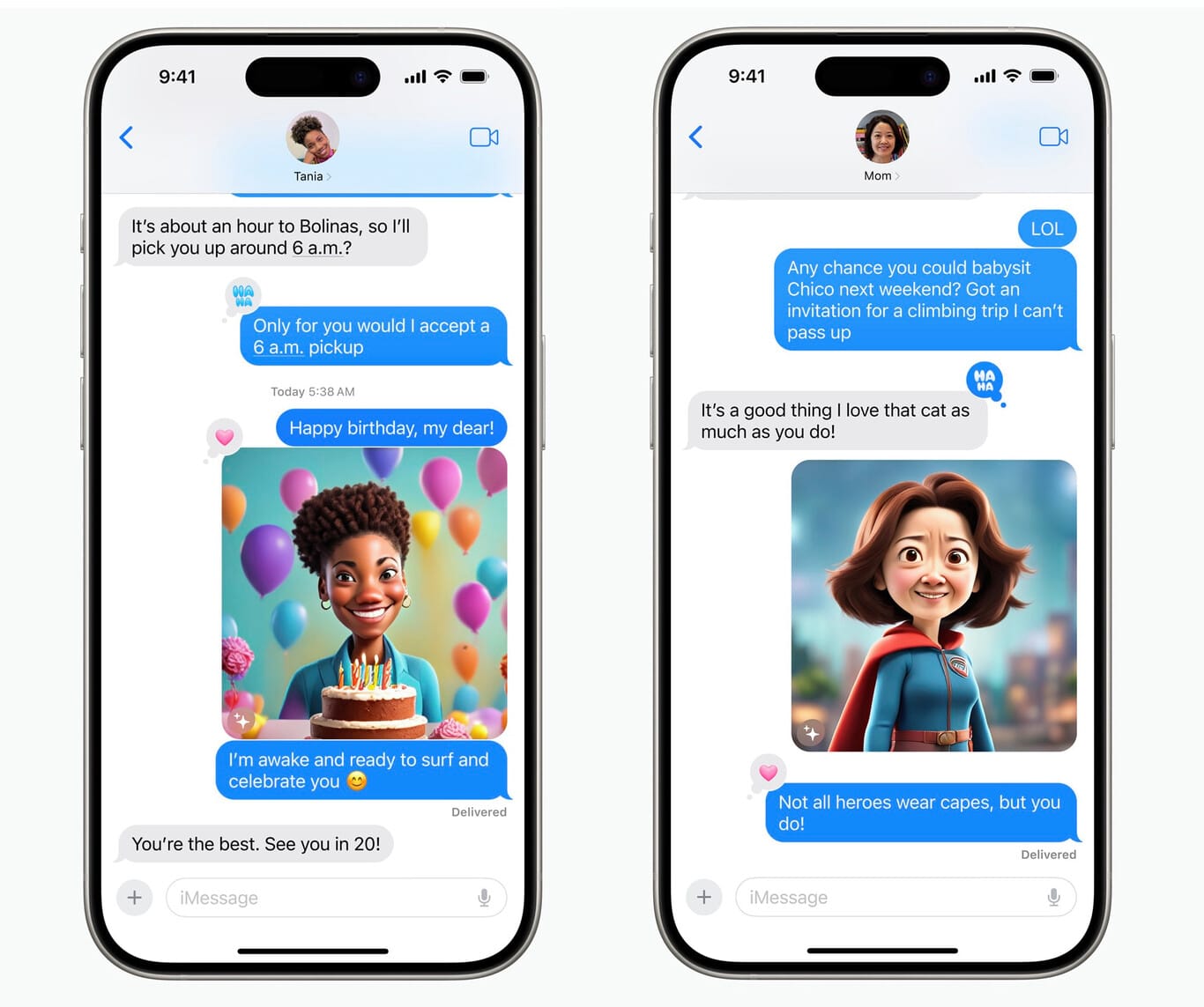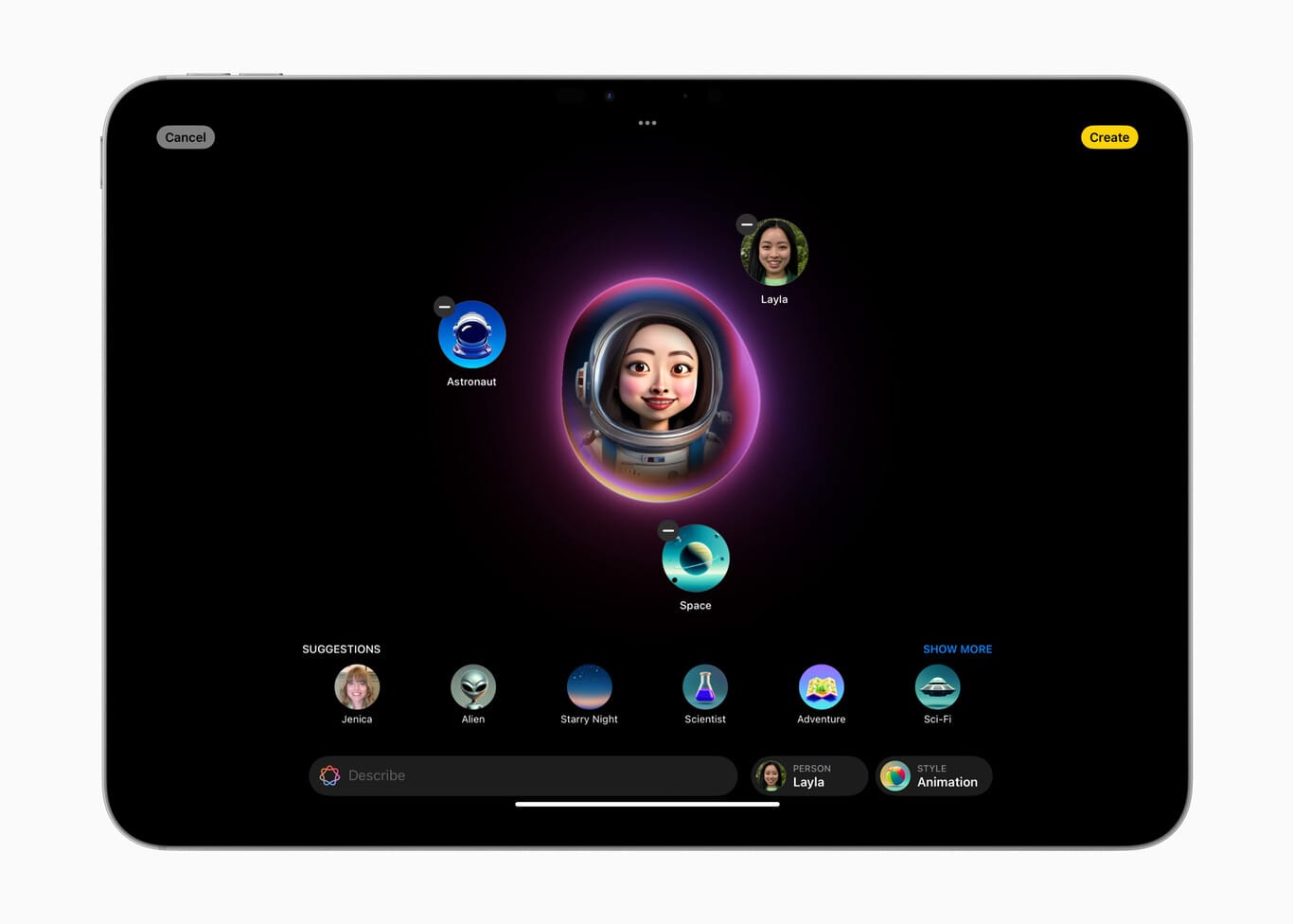Apple Intelligence: This is Apple's ambitious bet to finally integrate AI into its entire ecosystem

At last, we have Apple's much-anticipated foray into artificial intelligence. The company’s executives have decided to embrace the popular acronym (AI, for Artificial Intelligence), using it to name their new family of features: welcome to Apple Intelligence.
Had Apple Missed the AI Train?
It seemed so a year ago when ChatGPT was revolutionizing everything, and Cupertino didn’t appear to be taking any action. However, things might change starting today. The introduction of Apple Intelligence marks a turning point for a company that has taken its time to present its first venture into the AI segment. Apple’s proposal, as we’ll see below, is impressive.
A Hybrid AI (Local + Cloud) That Promises Privacy
Tim Cook introduced this significant launch by stating that Apple Intelligence had to align with the key strategies they’ve followed for years. This AI had to be powerful, intuitive, integrated into the product experience, personal, and, above all, private.

A lot of the explanation of its features focused on this aspect. According to Craig Federighi, Apple’s software chief, Apple Intelligence had to do everything “right,” and for that, they always focus on running models locally whenever possible.
This AI system does not collect your personal data, something achieved, according to Apple, through the integration of software and hardware. Generative AI models require a lot of computing power, and according to Apple, the latest iPad, iPhone, and Mac chips (nothing for Apple Watch or AirPods yet) can provide that power.
To offer its features, Apple Intelligence uses a semantic index based on the information you handle — photos, calendar events, messages, documents, photos — to then provide the results you're looking for when using Apple AI.

Combining Local and Cloud AI Functions
However, as rumored, these local AI functions will combine with cloud AI functions. Apple Intelligence will analyze the complexity of your request, and if it detects that more resources are needed, it will execute the request on its servers, in its own cloud.
This might raise concerns, but Apple has implemented what’s called Private Cloud Compute to handle more complex requests while protecting your privacy. These servers use Apple chips, as also rumored, and according to the company, the data is never stored: it arrives, is processed, and theoretically disappears.
AI Features Integrated into Our Daily Routine
After explaining the basics of its operation, Apple reviewed all the generative AI features that Apple Intelligence will have. Essentially, we saw many of the capabilities we've been enjoying through other platforms, and that Microsoft, for example, has been integrating into Windows.

Apple’s competition certainly offers many of these features. For example, there is the Rewrite option that can help us write all kinds of texts, such as cover letters, emails with a more informal (or formal) tone, or documents that this system will complete or rewrite to better align with the message we wanted to convey.
There are striking features like Smart Reply, which detects what questions are being asked in an email, answers them, and writes the email for us.

The text summarization feature has also been known for months, and here Apple also applies it to summarize email messages or notifications. In fact, Apple Intelligence wants to go further with these options.
Prioritizing Messages and Notifications
Thus, with these options, Apple’s operating systems can detect which messages are more important in Mail and which notifications are more critical, reducing or summarizing their content if we don’t want so many distractions.
AI-Generated Images and Emojis
Image generation is another logically highlighted feature of Apple Intelligence. With these functions, we can benefit from “Genmoji,” AI-generated emojis: just write what we want to get a character in emoji format. We can base these emojis on contacts or people in our photos.
There is also a new section called Image Playground that allows generating AI images directly from our devices. The capacity of this generative AI model will need to be evaluated, but Apple has focused on images more suited to comics and cartoons, perhaps to avoid issues like those Google faced with its images.

The image generator of Apple Intelligence seems to be limited to this type of image. It’s unclear if this tool can be used for different creative uses, as we've seen for a while with DALL-E 3, Midjourney, or Stable Diffusion, but Apple hasn't pointed in that direction.
Enhancing Note-Taking with AI
These AI features can also enhance our note-taking in Notes. A tool called “Image Wand” can generate a much more professional image from a scribble on our iPad using Image Playground. This feature is known from other platforms that do not use a text prompt but an image prompt to generate something from it.
The Big Winner: OpenAI
Generative AI options also help remove objects from our photos, like Google’s Magic Eraser. Here, there are other identical features, such as performing “natural” photo searches using natural language.
So we can make a request like “Katie with stickers on her face,” and Apple Intelligence will locate those images in our Apple Photos library.
Apple Is Just Catching Up
Expectations were very high for Apple when presenting its AI options, but what was seen at this event is essentially the same as what we've been seeing for months from other developers and platforms.
There are no revolutions here, and Apple’s approach to these options is very cautious: this is evident with image generation, which seems limited to that cartoon style.
Craig Federighi himself emphasized this at the end of the presentation: “This is just the beginning.” For now, Apple has preferred to be very careful in adapting to the new times, but without taking too many risks.

Privacy and Native Functionality
What stands out is the theoretical privacy guarantee offered by Apple Intelligence and the possibility that many of these functions work natively on iOS, iPadOS, and macOS locally. It will be interesting to see where Apple goes and whether these functions make a real difference.
Availability
Apple Intelligence will be available for free this summer as part of the beta versions of iOS 18, iPadOS 18, and macOS Sequoia. We will see it in its final version in the fall, but for now only in the United States and in English.
Some features, platforms, and languages will be offered throughout the next year, but attention: Apple Intelligence will be available on iPhone 15 Pro/Max, but not on standard models. Also, on Macs and iPads with M1 or higher chips, and Siri will be available in English for now.